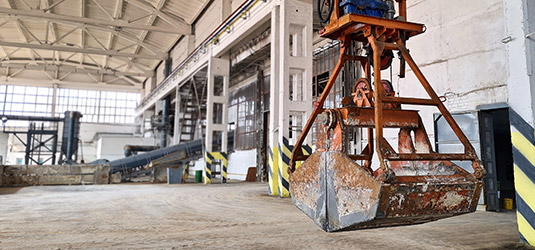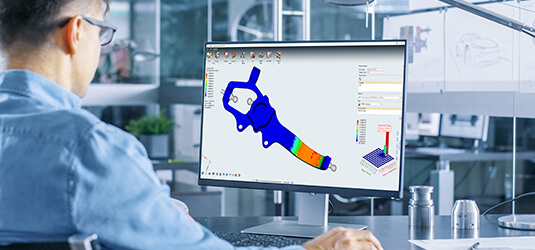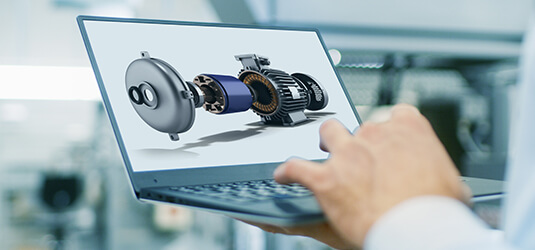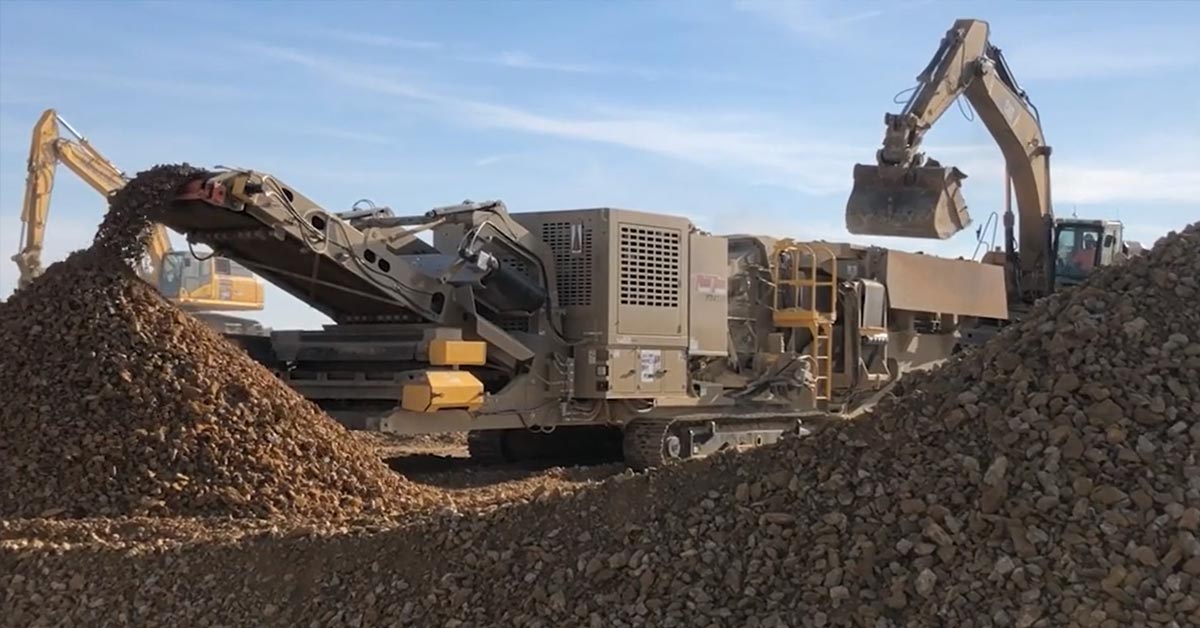
Heavy Equipment
Manufacturers of heavy equipment for the construction, mining, agriculture, and off-highway industries are faced with a range of challenges requiring their equipment to have great precision and the ability to withstand massive loads in extreme environments. To meet the demand of the market and stay competitive they need to continuously improve the performance and reliability of their machines, deliver products quickly, and develop innovative solutions. With Altair’s simulation-driven design approach, manufacturers can create reliable products of the highest quality while reducing costs and product cycle time. Simulation allows rapid investigation and analysis of product performance, factoring in fatigue and impact loads, and offering countermeasures for improvement. Whether farmland, highway, or construction site, we’ll help you carry the load.
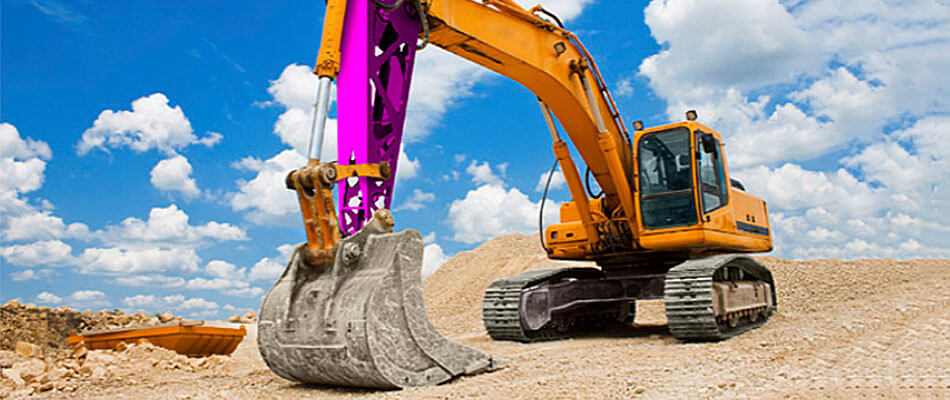
Efficient Development and Operation
Altair’s simulation-driven design tools enable off-highway equipment manufacturers to make informed, reliable product design decisions faster. Engineering simulation and Internet of Things (IoT) technology are being used together to provide operational insights with physics-driven and data-driven digital twins to optimize equipment performance, gain operational insights, and reduce operational costs.
Altair is positioned at the convergence of simulation, data acquisition, data analytics, and machine learning to realize greater fleet autonomy.
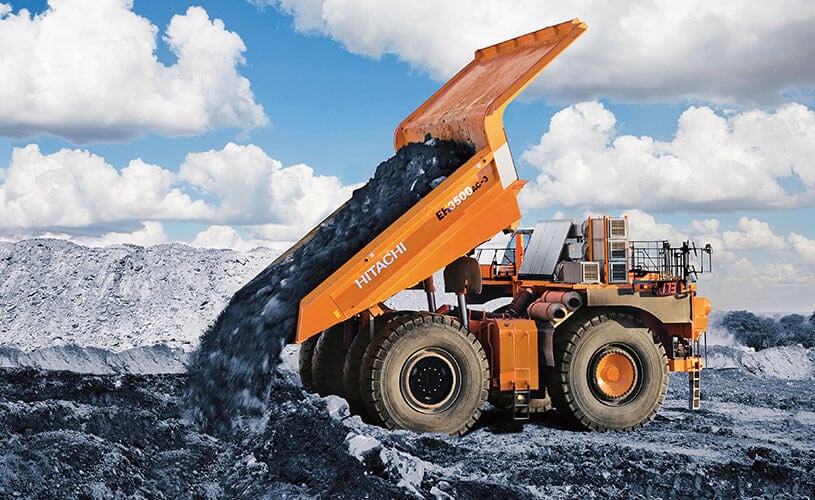
Achieving Sustainability Through Right-weighting and Electrification
In an industry dominated by large cast components, lightweighting opportunities for topology optimization are many. Altair’s structural design optimization technology is proven to reduce vehicle weight and improve performance. Altair simulation is also key to equipment electrification; extending working hours through greater drivetrain efficiency, simulating innovative cooling implementations, and mitigating impact and shock events that could cause a battery failure and potential fires. Simulation-driven design and electrification initiatives enable the industry to deliver performance while reducing CO2 emissions and meeting environmental efficiency and regulatory standards.
Interested in accelerating your weld certification?
Learn MoreMaximize Equipment Reliability, Safety, and Comfort
More Realistic Loads
Altair® MotionSolve® multi-body simulation models the dynamic response of mechanisms. Together with Altair® EDEM™, customers can optimize designs before building a prototype to quickly and accurately simulate the behavior of bulk materials such as coal, mined ores, soils, fibers, and grains. Coupled together, realistic material loads can be extracted for structural and system dynamics analysis.
Compatibility and Durability
Altair® Twin Activate™ rapidly models multi-disciplinary systems as 1D models. By simulating product performance, customers can understand overall behavior earlier and recognize key component interactions. To meet customer service life requirements measured in decades, Altair® HyperLife® provides a comprehensive and easy to use durability analysis workflow.
Operator Environment
Altair® OptiStruct®'s advanced noise, vibration, and harshness (NVH) analysis ensures operators can perform at their best. Quality is further addressed by Altair® Squeak and Rattle Director™. Altair® Radioss® models roll-over protection structure (ROPS) and falling object protective structure (FOPS) events to assure vehicle integrity and protect operators across all operating conditions.
Sustainable, Connected, and Smarter Production
Electric Drivetrains
The move towards hybrid and full electric powertrain systems provides manufacturers with business challenges and opportunities. Aligning electric equipment development cycles with traditional program timelines requires changes to engineering team structures and toolsets. Powertrains must be highly efficient and lightweight while meeting new regulations and growing customer expectations. Learn more about our offerings for electric powertrain development and integration, simulation for battery design, and safety.
Agribots and Warehouse Innovation
Equipment connectivity and electromagnetic compatibility (EMC) are essential to today’s fleets and can be optimized with Altair solutions. Altair® Feko® is widely used for the design and placement of antennas and modeling wave propagation for network simulation. Feko simulates the radiation and irradiation of cables, antennas, and devices to inform the design of effective shielding. Altair® Flux® evaluates the magnetic field radiated by power cables and busbars and the effect of external fields on the operation of sensors or actuators.
Smart Mining, Construction, and Farming
Digital twins help organizations optimize product performance, gain visibility into the in-service life of a product, know when and where to perform predictive maintenance, and how to extend a product’s remaining useful life (RUL). Altair® IoT Studio™ is a powerful collection of web services and analytics tools to scale IoT systems. Modern greenhouses are becoming increasingly tech-heavy, using LED lights and automated control systems to perfectly tailor the growing environment. Altair’s Toggled subsidiary creates smart lighting products and grow lights.
Featured Resources

The Challenges of Implementing a Simulation Journey in the Off-Highway Industry, presented by Dr. David Panni
The Off-Highway Industry presents many exciting opportunities and challenges for simulation in the Engineering design and development process. This presentation will outline some of the products and the technical challenges in this specific industry.
The presentation will reflect on how simulation tools are currently used in the industry, how they may be used in the future and the key characteristics of the tools to meet the technical and economic challenges ahead.

Applying Machine Learning Augmented Simulation to Heavy Equipment
Simulation-driven design changed heavy equipment product development forever, enabling engineers to reduce design iterations and prototype testing. Increasing scientific computing power expanded the opportunity to apply analysis, making large design studies possible within the timing constraints of a program. Now engineering data science is transforming product development again.
Augmented simulation features inside Altair® HyperWorks® are accelerating the design decision process with machine learning (ML). The power of ML-based AI-powered Engineering combined with physics-based simulation-driven design leveraging the latest in high-performance computing is just being realized.

Hitachi Lightweight Mining Haulers Optimized
Truck dynamics, control system, thermal, and fatigue analyses all need to be completed when designing a new truck design. Using Altair HyperWorks, Hitachi achieves a 10% weight reduction in the main frame and rigid body, while maintaining product quality.



